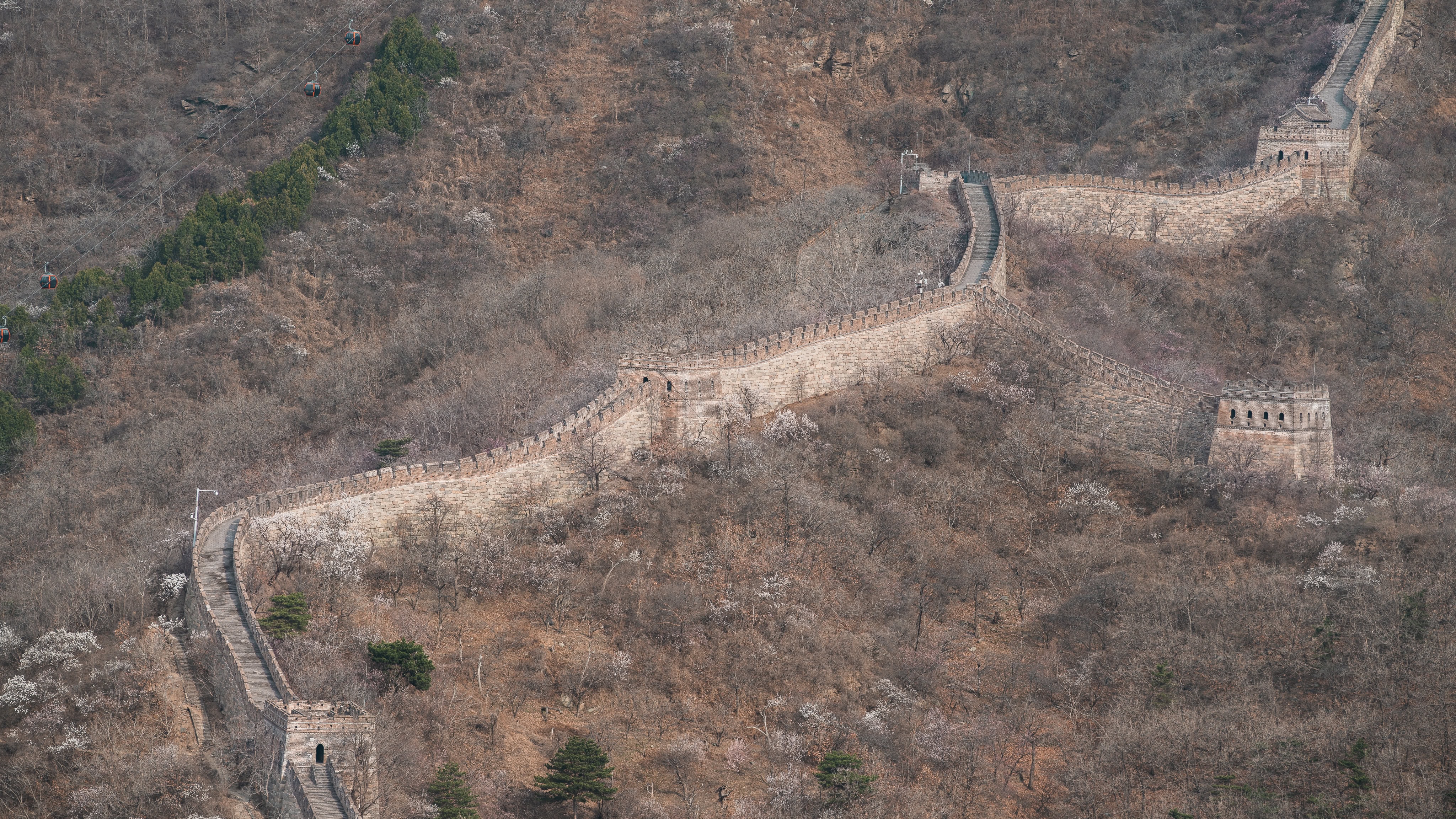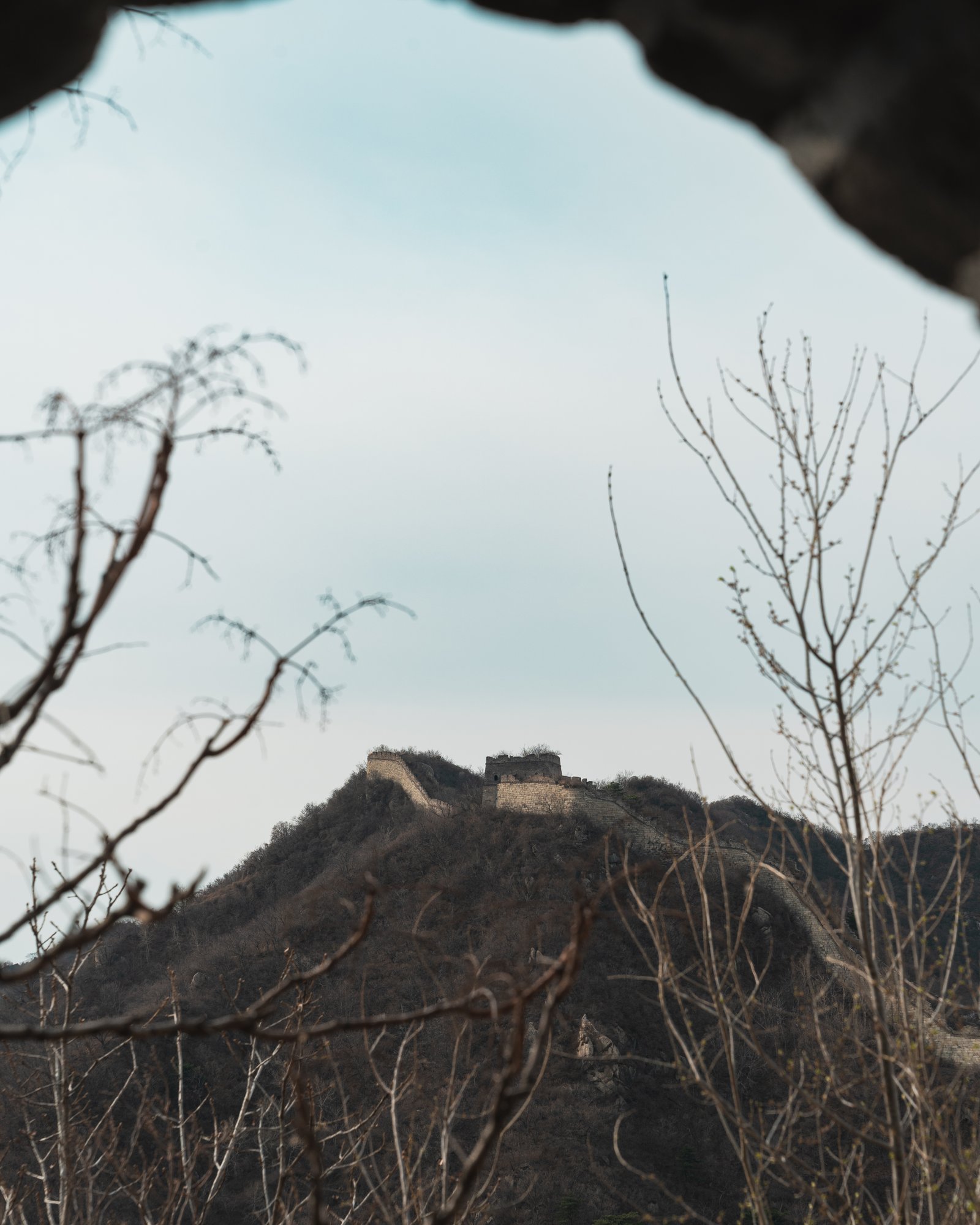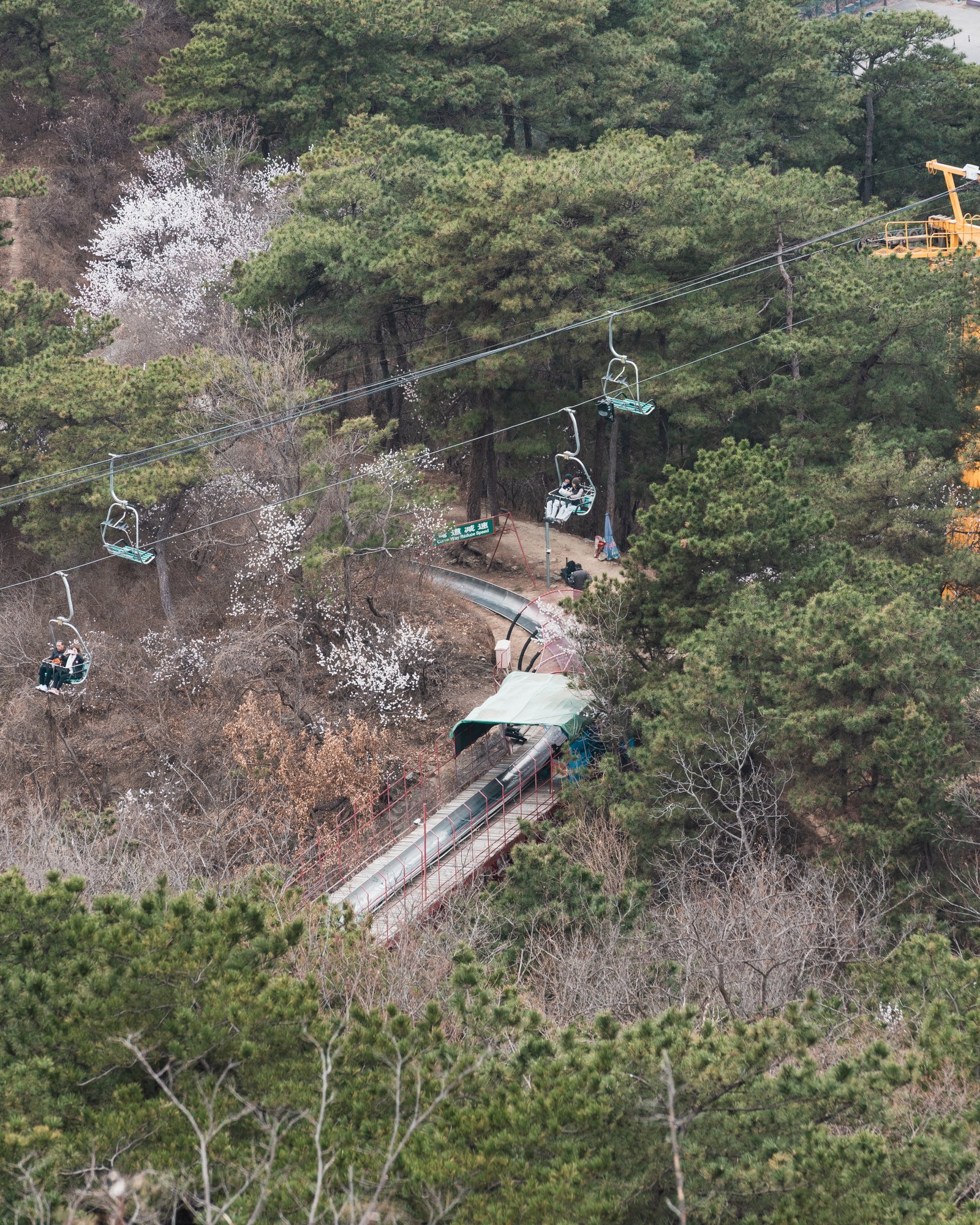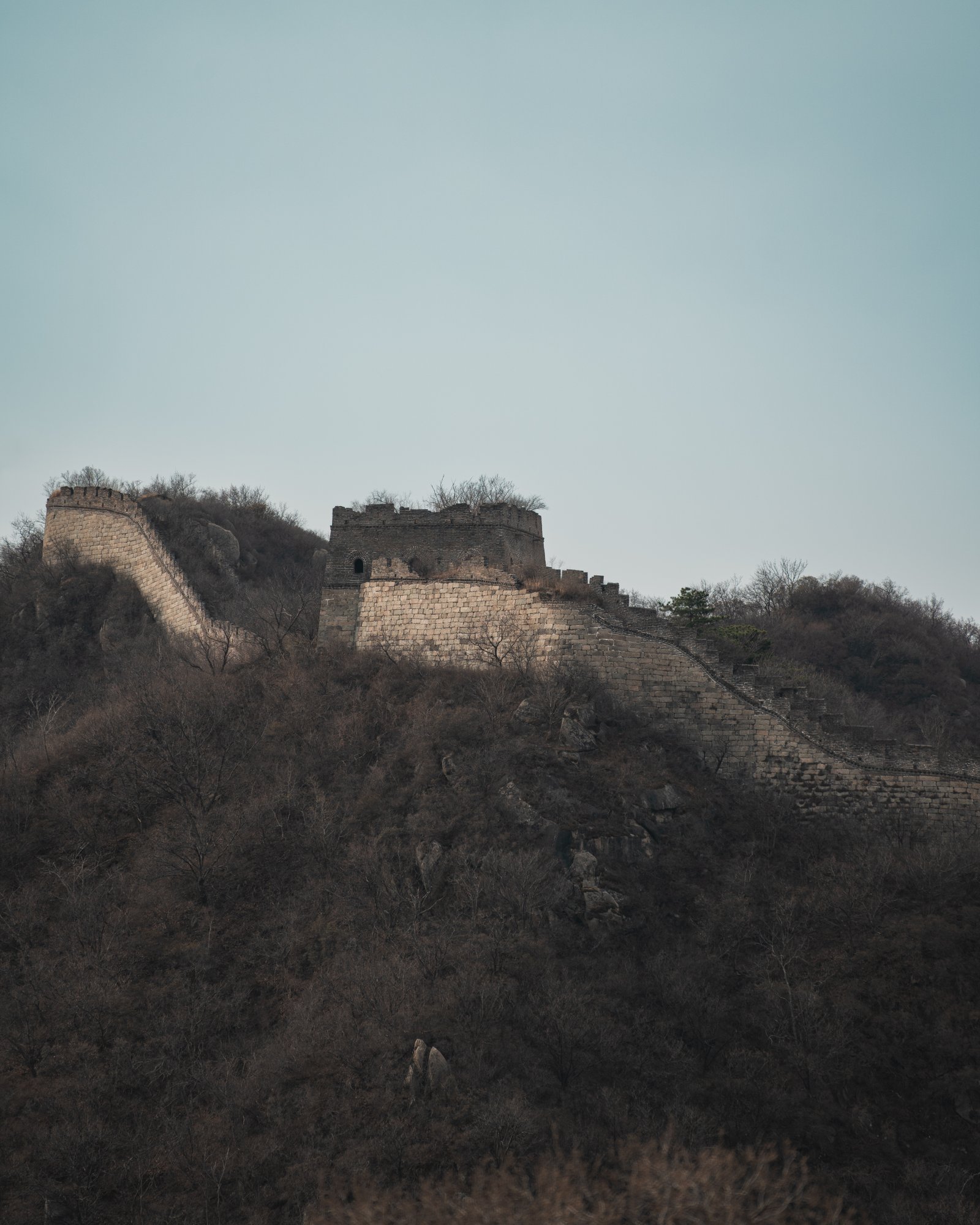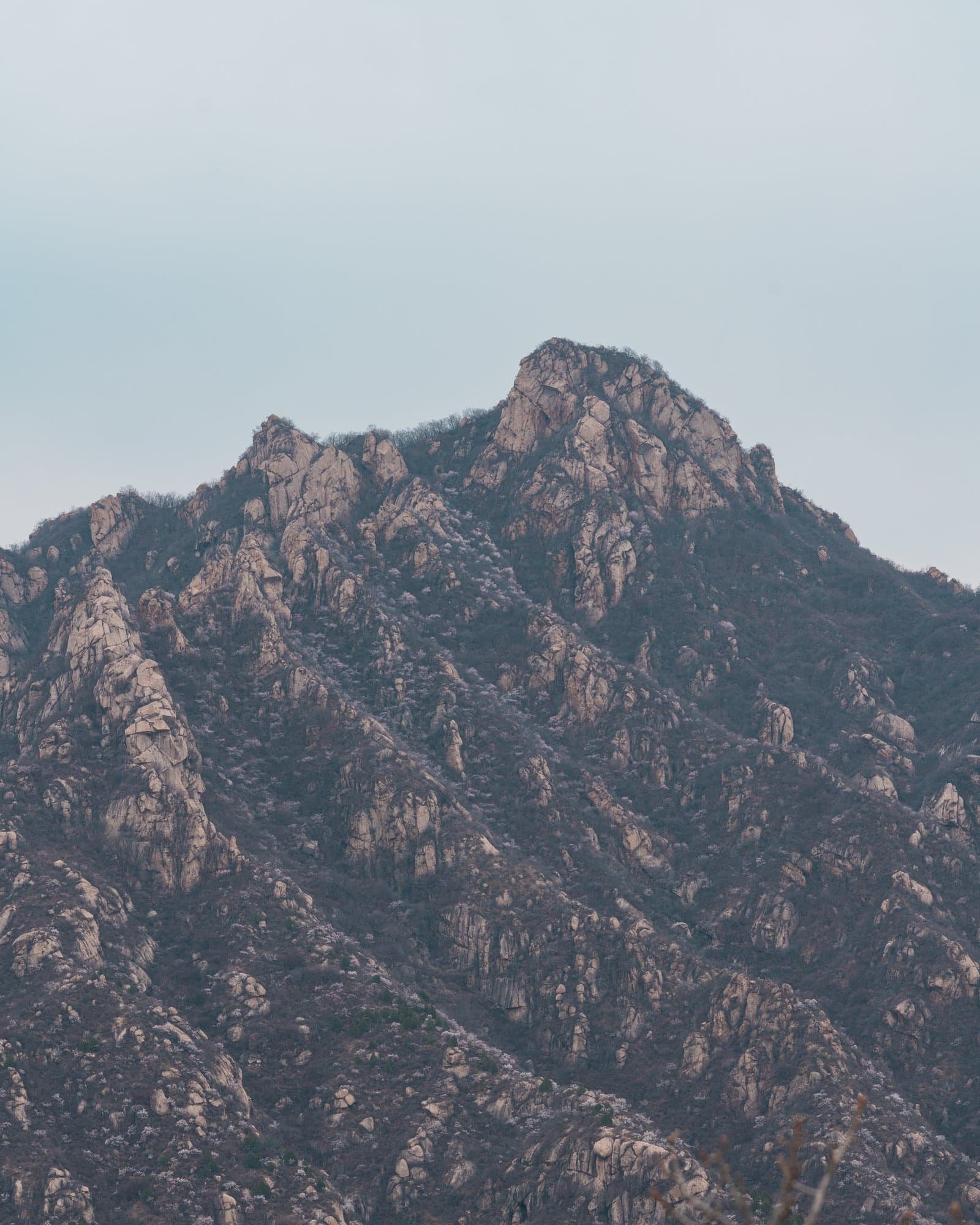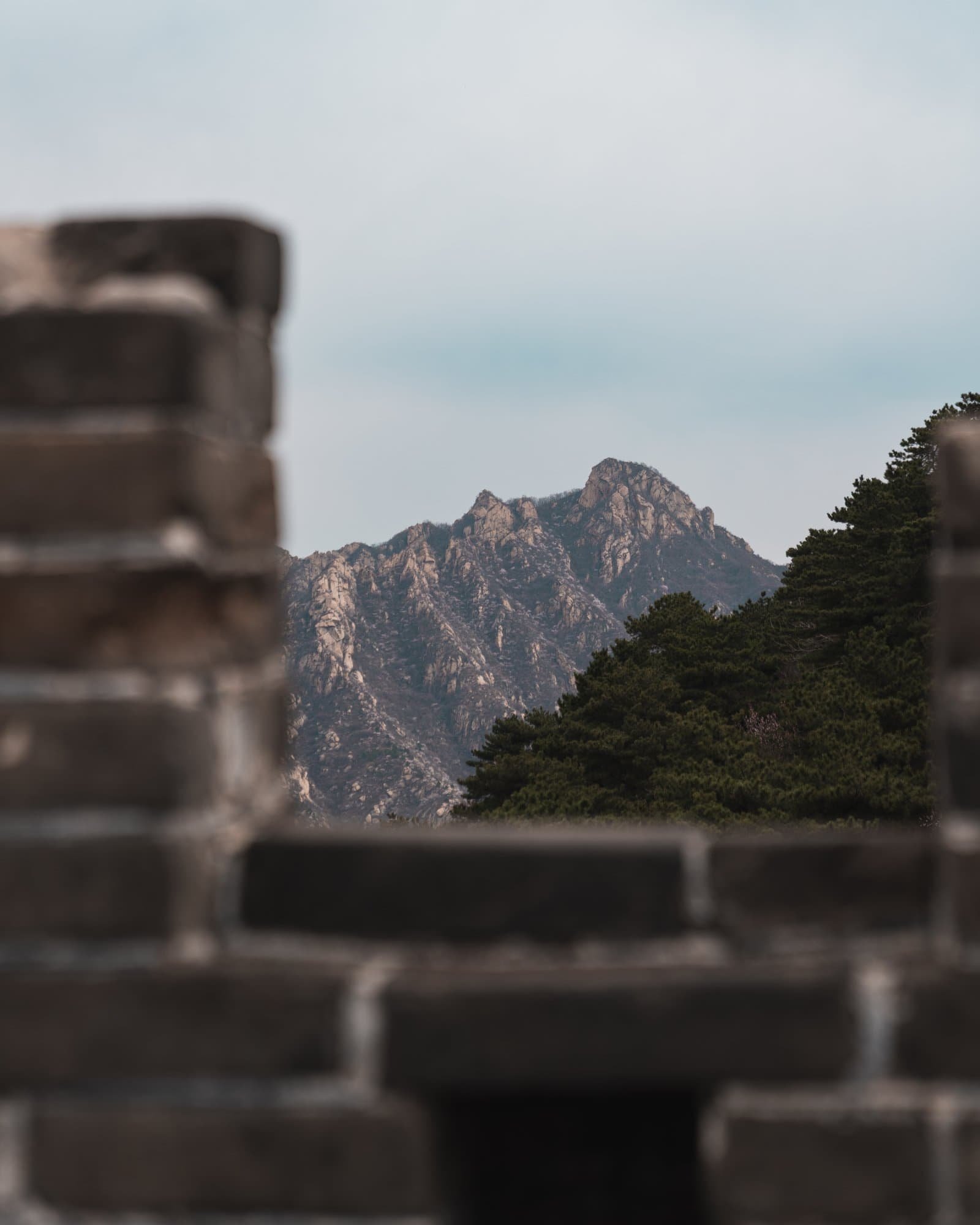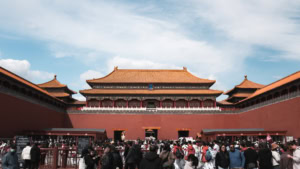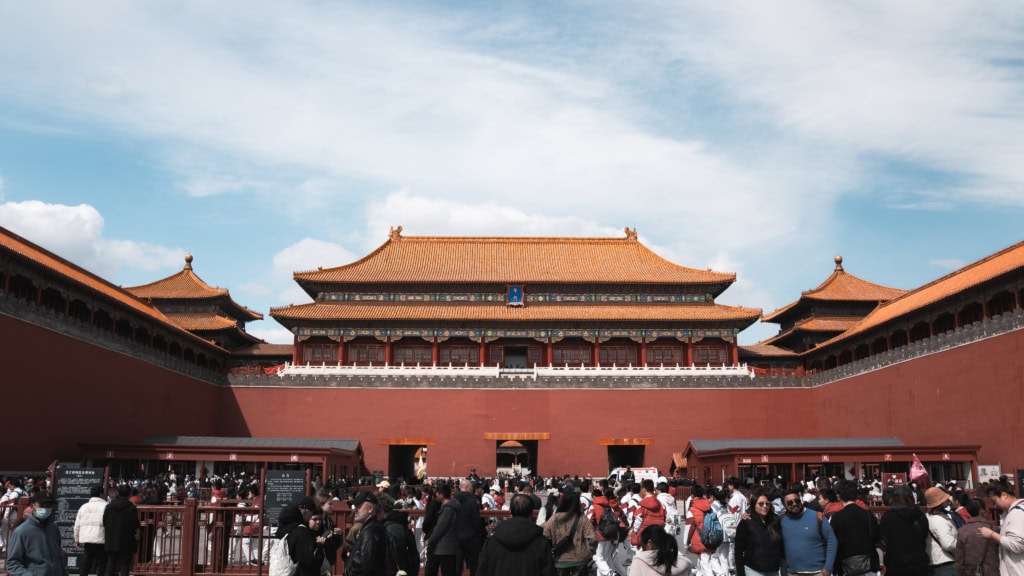The Great Wall of China – the very name conjures up images of huge stone walls stretching seemingly endlessly over craggy mountain ridges. Few structures in the world are as well known, yet in many ways so underestimated. It is one of the most impressive structures in the history of mankind, and rightly so: one of the New Seven Wonders of the World and symbolises greatness, endurance and the human will to achieve the impossible.
Mutianyu is one of the most beautiful and at the same time one of the most pleasantly tranquil sections, and this is where we went in March to experience a unique adventure. Our visit was more than just a tick on the bucket list – it was a moment of deep awe, a sense of adventure and a real connection with history.
Location and accessibility of the Mutianyu section
Located about 70 kilometres north-east of Beijing, Mutianyu is considered one of the best alternatives to the busy Badaling, Jinshanling or Simatai sections. The big advantage: Mutianyu is easy to get to, but much less crowded, especially if you arrive early in the morning.
We opted for a private driver to make the most of our day. Our trip started before sunrise – and it paid off: we were the first to reach the wall that day. Alternatively, you can hire a Didi (the Chinese version of Uber) to take you there and back for around 200-300 yuan each way. The trip takes about 1.5 hours, depending on traffic.
Tickets and cable car: plan flexibly and get the best out of it
Tickets for the Mutianyu section can be booked on the spot or conveniently via WeChat. Early booking is recommended to avoid queues. Admission itself is quite cheap, but the cable car or summer toboggan run rides are not included and cost extra. In our case, it was 140 yuan for the cable car up and the summer toboggan down.
The cable car takes you right up to Watchtower 6, from where you can explore the wall in either direction, depending on your fitness, mood and time of day. The summer toboggan run is a highlight, especially on the way back: fast, fun and with great views.
History and significance – a symbol of endurance
The origins of the Great Wall of China date back to the 7th century BC, but the part visible today dates from the Ming Dynasty (1368-1644). Originally built to protect against invaders from the north, the wall became a symbol of national identity and human engineering. With a total length of over 21,000 kilometres, it is not only the longest man-made structure in the world, but also one of the New Seven Wonders of the World. This title reflects not only its impressive dimensions, but also its cultural and historical significance.
The section at Mutianyu itself was built in the 6th century and later extensively restored – so you are actually standing on centuries of history. Particularly impressive is the construction method, with battlements, embrasures and signal towers, which is not only militarily functional but also architecturally well thought out. Every metre of the wall tells a story of hard work, hardship and strategic thinking – an experience you can literally feel as you walk.
Our hike: From Tower 5 to Tower 1 and back to Tower 14
Our walk began at Tower 6, which we reached by cable car. With the first rays of sunshine, we stood on the wall – alone, in peace. A magical moment you can only experience if you start early.
First we headed for Tower 1. The route was short but challenging, in many places you really had to climb. There are steep steps, crumbling stones and almost vertical climbs between the towers. The path ends abruptly after Tower 1, as the wall has not been restored since. The view of the ruins – reclaimed by nature – was impressive.
We then walked back and on to Tower 14, which was a more leisurely walk but also offered breathtaking views of the surrounding hills. In total we spent a good four hours on the wall, every minute of which was special.
Tips for visitors: How to make your visit unforgettable
- Start early: The earlier you start, the better your chance of experiencing the wall without large groups of tourists.
- Private driver is worth it: More flexible, less stressful and usually very reliable.
- Wear good shoes: Many sections are steep and uneven – you really need good shoes.
- Plan entrance fee + train separately: There is a charge for both and should be factored into your budget.
- Keep an eye on the weather: In March it can still be chilly, but clear – perfect for hiking and photography.
Why Mutianyu? Our personal recommendation
Mutianyu offers everything you could hope for from a visit to the Great Wall – without the mass tourism. The restoration is excellent, the views are spectacular, and the option of using the cable car and summer toboggan run makes the visit affordable for the less sporty traveller. If you’re looking for an immersive experience rather than a quick photo in front of the wall, this is the place to be. The Mutianyu section is the perfect compromise between authenticity, accessibility and tranquillity.
Our day on the Great Wall was an absolute highlight – intense, magical and simply unforgettable. Even the journey at dawn, the first light on the mountain peaks and then the moment when we were the first to enter the wall – all alone, surrounded by silence and vastness – gave us goose bumps. The wall itself overwhelmed us: Mighty, steeped in history and beautifully embedded in the mountainous landscape. Every step felt important, every view was spectacular. For us, it was a highlight of our trip.

